Manet... Velázquez... The French Taste for Spanish Painting
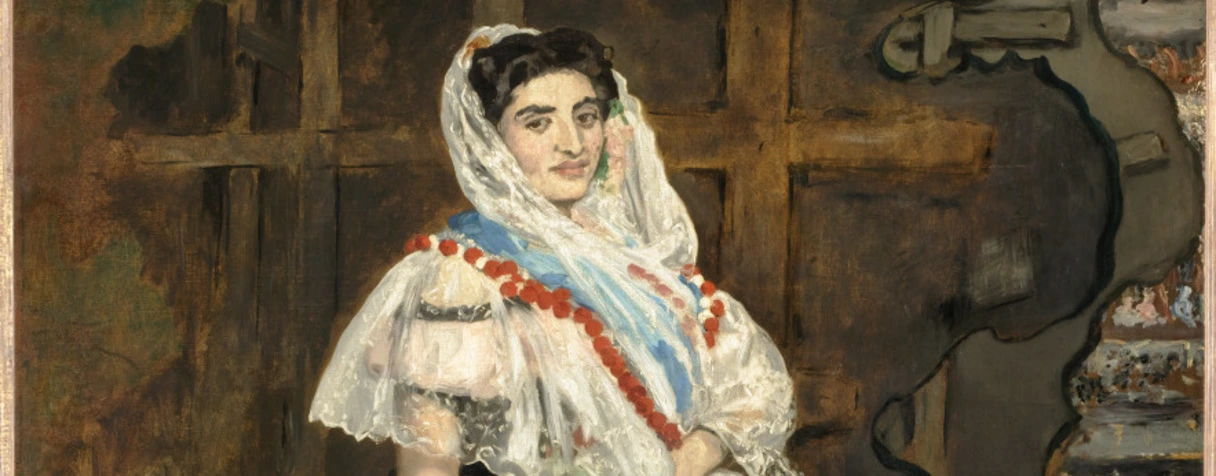
Lola de Valence, en 1862
Musée d'Orsay
Legs du comte Isaac de Camondo, 1911
© Musée d’Orsay, Dist. RMN-Grand Palais / Patrice Schmidt
See the notice of the artwork
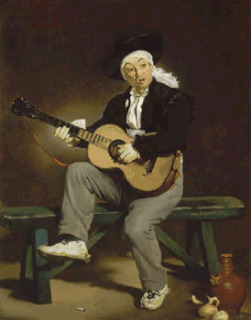
Le chanteur espagnol, 1860
New York, Metropolitan Museum of Art
Don de William Church Osborn, 1949
© Metropolitan Museum of Art, New York
Returning from a short stay in Madrid on September 14, 1865, Manet wrote to Baudelaire that Vélázquez "is the greatest painter there ever was". Fascinated by Spain, Manet wanted to judge for himself the artist's work mostly exhibited at the royal museum in Madrid.
Presented at the Musée d'Orsay and then at the Metropolitan Museum of Art in New York, the exhibition will show the evolution of 19th-century painting as the rules of academicism and technique derived from Raphael were progressively replaced by a freer style of painting, allowing for a better grasp on reality and an impression of life rendered by colour strokes. The exhibition is not a presentation of Spain as seen by travellers, even though the theme of bull races painted by Goya, Dehodencq and Manet are shown
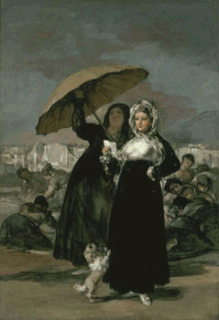
La lettre (les jeunes), vers 1812-1814
Lille, musée des Beaux-Arts
© Musée des Beaux-Arts, Lille
A third of the exhibition covers Manet's Spanish manner, before and after his trip to Spain. The rest is composed of artworks by his elders, contemporaries and friends, preceded by a few of the Spanish paintings admired by French artists during the nineteenth century. Goya features prominently, as Velázquez's heir and the last great court painter, well-known as early as the romantic period for his Fancies that inspired Delacroix and later on Constantin Guys and Manet.

Sainte Lucie, vers 1635-1640
Chartres, musée des Beaux-Arts
© Musée des Beaux-Arts, Chartres
Spanish art, little-exhibited in France before the Revolution, entered the Louvre after the Napoleonic wars in 1814-1815, with masterpieces by Ribera, Murillo and Zurbaran later returned to Madrid following the Vienna Congress.
Genuine familiarity in France came with Louis-Philippe's Galerie espanole (Spanish Gallery), installed in the Louvre from 1838 to 1848, featuring over 400 paintings (later dispersed in London in 1853). Works by Goya, including the Youngs (Palais des Beaux Arts de Lille) and the Majas at the Balcony, could be admired, but the revelation was Zurbaran, above all his Saint Francis Meditating (London, National Gallery) above all. Two paintings by Corot (Musée du Louvre) and Manet (Fine Arts Museum, Boston) were directly inspired by it.
Millet painted Sainte Barbe (Musée des Beaux-Arts d'Angers) in the style of Ribera.
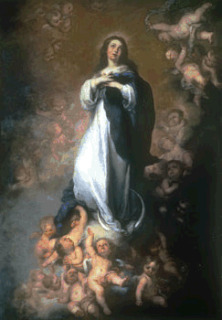
Immaculée Conception, dite Conception Soult, 1660-1665
Madrid, musée du Prado
© Musée du Prado, Madrid
Yet the most revered artist was Murillo. After the loss of the Galerie espagnole, the Louvre acquired Murillo's Immaculate Conception in 1852 at great expense(it is now at the Prado museum following an exchange in 1941), but also more modest paintings such as the Gathering of Thirteen Characters believed to be by Velázquez, which inspired Manet for copies and variations, including the Child with Sword (Metropolitan Museum of Art, New York).

La signora Adela Guerrero, danseuse espagnole, 1851
Bruxelles, musées royaux des Beaux-Arts de Belgique
© Musées royaux des Beaux-Arts de Belgique, Bruxelles
Spanish painting set an example of extreme realism with its beggars, buffoons, cripples and martyrs. French realists found matter in it not only for modern subjects, but also for a new form of history painting, as can be observed in the career of some of Courbet, Bonvin and Manet's friends such as Legros, fascinated by Zurbaran, and Ribot, who passed for a new Ribera.
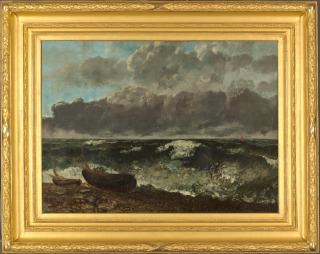
Juan Prim, 8 octobre 1868, 1870
Musée d'Orsay
Achat au Salon, 1878
© Musée d’Orsay, dist. RMN-Grand Palais / Patrice Schmidt
See the notice of the artwork
Carolus Duran and Bonnat, deeply marked by their sojourn in Spain, are also represented in the exhibition, the first with a Self-Portrait (Prado museum, Madrid) that looks like a Velázquez, the second with the Job of the 1880 Salon, wrinkled in the manner of Ribera. As for Henri Regnault, a much-acclaimed laureate of the Prix de Rome, he left the Villa Médicis to pursue his work in Spain ; witness to a new revolution in Madrid, he painted the monumental portrait of Juan Prim ; October 8, 1868 (Musée d'Orsay), inspired both by Goya and Velázquez. This painting, hung at the entrance of the exhibition, sums up the political upheavals of Spain in the 19th century. And Manet's Execution of Maximilian (Boston version) echoes Goya's Dos de Mayo.
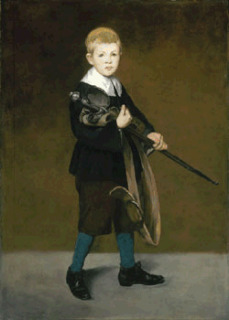
L'enfant à l'épée, 1861
New York, Metropolitan Museum of Art, don de Erwin Davis, 1889
© Metropolitan Museum of Art, New York
The loans granted by the Metropolitan Museum of Art, co-organiser of the exhibition, are particularly important concerning both Spanish art and Manet.
They allow visitors to follow the artist's progress through the Salons that preceded his trip to Spain, with the Guitarero of the 1861 Salon, the two paintings that surrounded Lunch on the Grass at the Salon des Refusés of 1863 – Mlle Victorine in the Costume of an Espada and Young Man in the Costume of a Majo –, the Christ with Angels of the 1864 Salon, as well as the Child with Sword of 1861, about which Zola wrote : "It is said that Edouard Manet is related to the Spanish masters, he has never made it so clear as in Child with Sword."
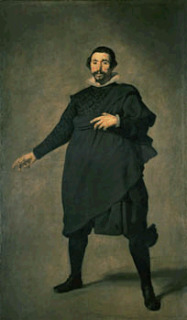
Le Bouffon Pablo de Valladolid, vers 1636-1637
Madrid, musée du Prado
© Musée du Prado, Madrid
The Prado museum has loaned four paintings by Velázquez, including The Buffoon Pablo de Valladolid, that inspired Manet with the Tragic Actor (National Gallery of Art, Washington) and The Fife (Musée d'Orsay), Menippe, the influence of which can be found in his Two Philosophers (Art Institute, Chicago) and The Dwarf El Primo with an open book that reminds one of Emile Zola (Musée d'Orsay) in which Manet took care in placing an engraving by Goya, after Velázquez's Drinkers (Prado museum).
The Artist (Sao Paulo museum), rejected from the 1876 Salon, is a last reminiscence of the portraits of Philippe IV as a Hunter by Velázquez. If in this effigy of an acquaintance - the bohemian Marcellin Desboutin -, Manet further mastered the "thrown touch" (touche jetée) technique, abandoning the greys of the Tragic Actor for a play on nuances of ochre and brown with black, - he nevertheless remained true to Spanish realism and its ability to confer dignity over misery.
